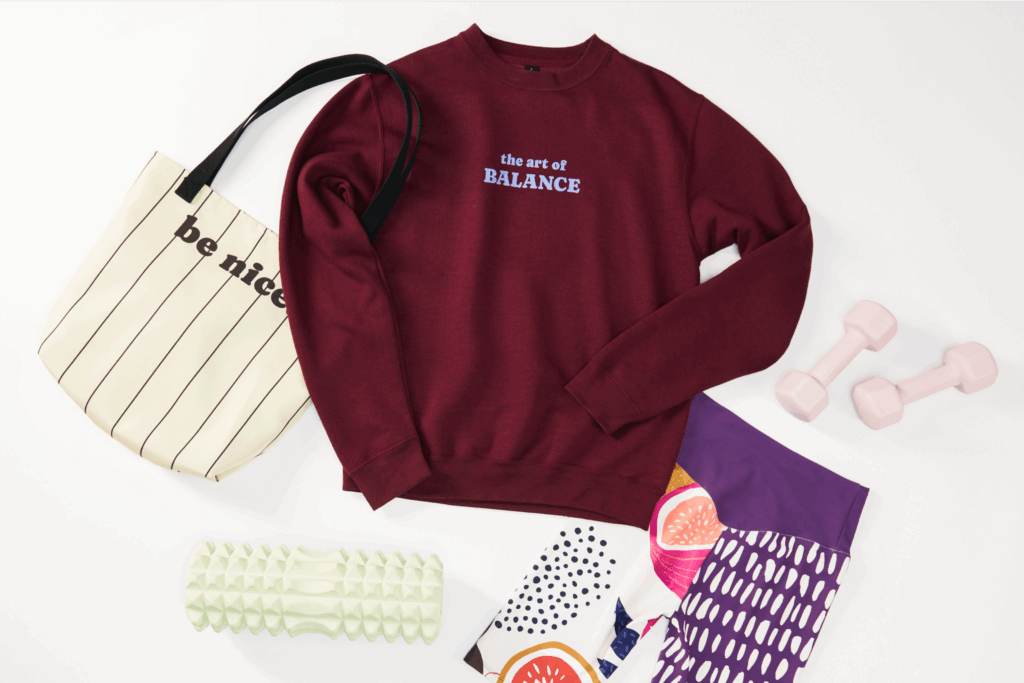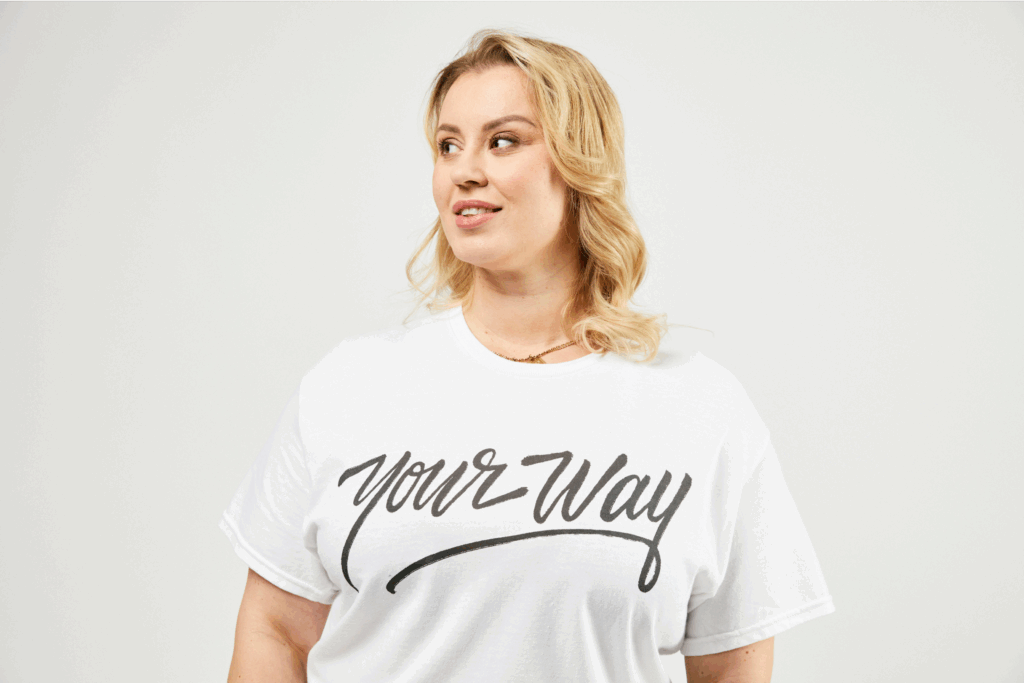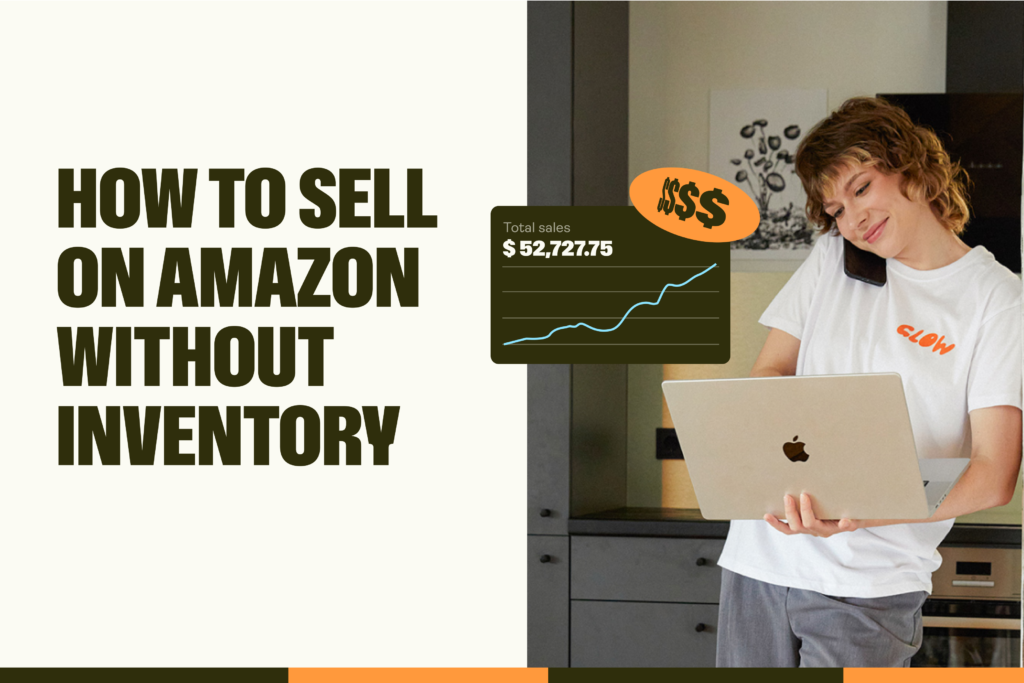Bring your design ideas to life
Looking to make a name for yourself in the digital art world? Then you’re in luck – building an online art store and marketing your products has never been easier!
This guide will cover how to sell digital art online on different sales platforms and how Print on Demand lets you start with $0 upfront.
This post may contain affiliate links, which means we may earn a commission if you make a purchase through those links. This comes at no additional cost to you.
Key takeaways
- Social media, online marketplaces, or personal websites are great ways to start selling art online, whether digital downloads or physical products like posters and apparel.
- Success comes from building a strong online presence and targeting the right audience with your marketing tactics.
- Watermarks, low-resolution previews, and commercial licenses protect digital creations from theft and unauthorized use.
- Online art sales continue to soar with the rise of eCommerce. NFTs (non-fungible tokens) have added another layer of profit potential to the art market.
- Print-on-demand services let artists sell physical products and digital prints without handling inventory or logistics, making them a convenient and efficient way to start selling digital art.
What counts as digital art?
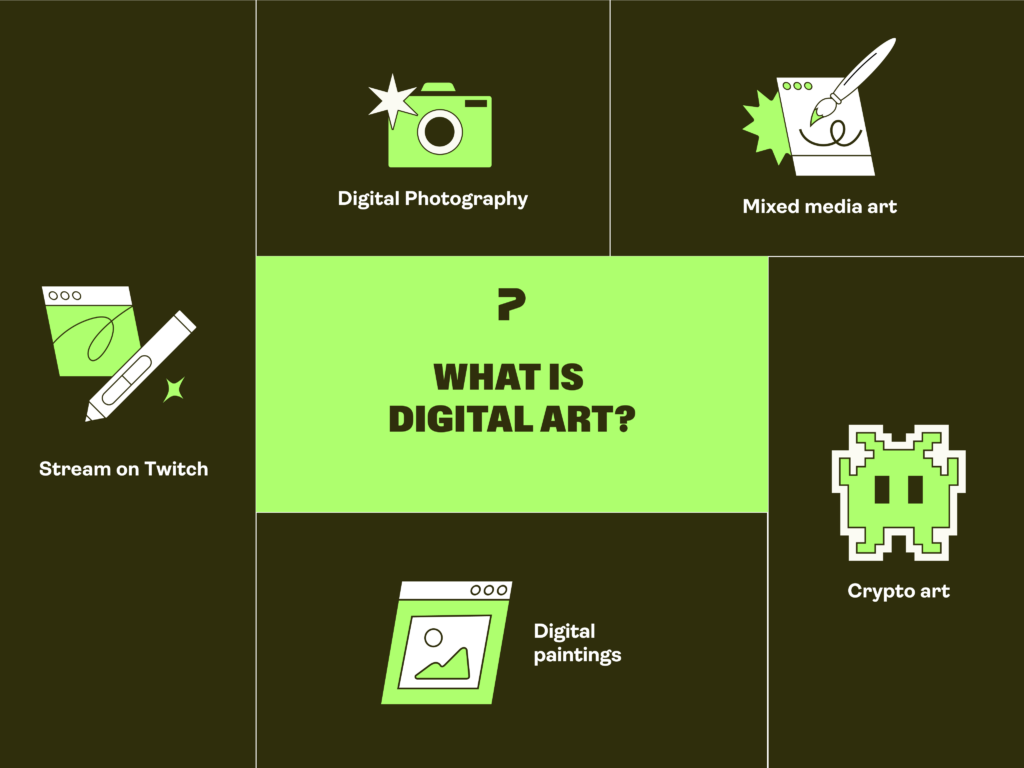
Digital art is any artwork created or enhanced using digital tools, such as illustrations, 3D models, animations, or photo manipulations made with software. It also includes art forms like digital paintings, pixel art, and interactive media.
Here are a few of the most common digital art forms:
- Digital photography: Photography with digital tweaks or unique online presentations.
- Mixed media art: Combinations of traditional art techniques, like painting or drawing, with digital tools and elements to create a hybrid, multidimensional piece.
- Computer graphics: Vector and pixel graphics, 2D digital brushwork, or 3D models.
- Digital art prints or digital paintings: Physical art scanned, printed, and presented digitally.
- Crypto art or NFTs: Non-fungible tokens, often computer-generated, registered on a blockchain.
Some of the top-selling digital items include:
- Wallpapers
- Stock images
- Coloring pages
- Editable images
- Digital cards
- Fonts
- Site templates
- Fan art
Is selling digital art online profitable?
Art-related online sales were estimated at almost $12 billion in 2023 – nearly double their value in 2019 – proving just how profitable selling digital art can be
The introduction of blockchain, aka NFTs, has contributed to the online art market. Creating NFT merch as custom printables can be your next tactic for making money online.
Effective digital art sales hinge on identifying a target niche and building a strong online presence through marketing strategies and promotions. Choosing a cost-effective business model for selling your artwork, like Print on Demand, also greatly affects how much you earn.
Make it happen today
How to turn your digital art files into profit
Two main ways to profit from creating digital art are selling it as digital products or transferring it to physical items. For example, selling downloadables on social media or selling printables on Etsy.
Let’s look at both categories and evaluate some business strategies.
Selling artwork as digital products
Selling digital downloads is the easiest way to start your online art business. Customers purchase the art files and can turn them into prints or keep them digital.
Choose where to sell art online
When deciding where to sell digital art, pick the online platform that best aligns with your art style and business goals.
Here are the top options and their benefits:
- Social media: Platforms like Instagram and TikTok let you showcase your work and attract buyers directly. Link to your online store or offer commissions by connecting with followers personally.
- Online marketplaces: Sites like Etsy or Creative Market make it easy to sell digital downloads by providing tools to create product listings, set prices, and reach a built-in audience searching for unique artwork.
- Stock image sites: Platforms like Adobe Stock and Shutterstock are ideal for selling photography, mixed media, and graphic design. They offer a global audience looking for high-quality, royalty-free assets.
- Your own website: For full control over branding and pricing, consider creating your own eCommerce store with platforms like Shopify, WooCommerce, or Wix. These offer customization options to sell your work in a professional, personalized space.
- Commission sites: Personalization is a big selling point. Highlight your ability to create tailored pieces, such as portraits or banners, with transparent pricing and examples. Promote on social media or platforms like DeviantArt or Fiverr to reach diverse audiences.
The best platform depends on your art style and target audience. For example, traditional artists may thrive with an Etsy shop, while graphic designers might succeed on stock image sites. Evaluate your goals and start with the platform that best suits your needs.
Sell digital art files as NFTs
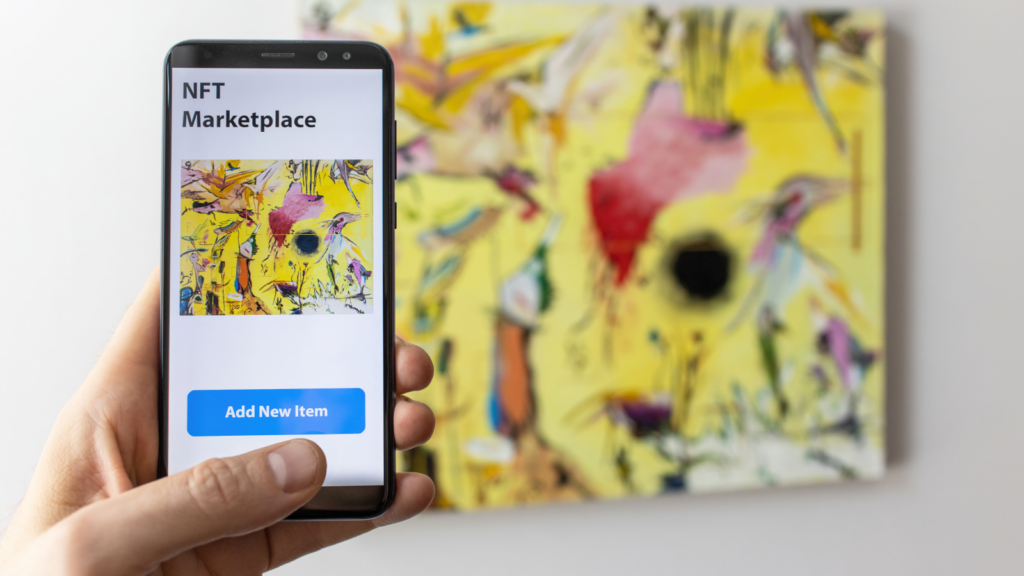
NFTs (non-fungible tokens) are unique digital assets stored on a blockchain, ensuring ownership and authenticity. For artists, NFTs provide a way to sell exclusive digital art, often appealing to high-paying collectors who value scarcity and originality.
While creating and selling NFTs can be profitable, the market caters to a niche audience, and success often depends on effective branding and timing. Popular beginner marketplaces and online galleries like Rarible, Foundation, and Nifty Gateway focus on showcasing the art itself.
Start by learning how to create NFT art on our blog. Keep in mind that listing your work may require initial costs, such as gas fees. However, the potential for high-value sales makes NFTs an exciting option for artists.
Make it happen today
Selling digital art as physical products
Turning your digital art into physical products is a fantastic way to expand your revenue streams. By partnering with a printing company to add your designs to items like t-shirts, posters, mugs, or notebooks, you’ll reach a broader audience and create products with a higher perceived value.
Turning your files into physical art also offers an excellent opportunity for repeat sales, especially when paired with trending designs or niche themes.
Print on Demand (POD) makes this process simple and stress-free. With POD, you don’t need to worry about inventory or shipping. Just upload your artwork to your chosen items, create your product listings, and let the Print Providers handle production and logistics. It’s an easy and profitable way to bring your digital art to life and grow your business with minimal effort or upfront costs.
According to Reactiva Online, Printify is the best partner for selling digital art as physical products because of its large selection of products and the best prices.
Sell canvas prints, wall art, posters, and cards

Selling posters, wall decor, and custom canvas prints is a great option if you want copies of your artwork for decorative purposes.
Choose an item from the Printify Catalog that fits your artwork, then upload your design to the Product Creator and make any necessary adjustments. Once ready, set your pricing and shipping details, then integrate your Printify account with platforms like Etsy or Shopify for seamless listing and order management.
Posters – A good budget item for physical art prints, posters are the best college lifestyle decor or loyal fan go-to and come in multiple sizes. Try the current best-selling Premium Matte Posters, water-resistant Silk Posters, or the Framed Horizontal Posters with a durable acrylic finish.
Canvas – While not painted directly, the Classic Canvas, made with polycotton or the Gallery Canvas Wraps, provide high-quality art prints with a professional framed finish. If you want to go all out with a more premium aesthetic, go for the eco-friendly canvas made from sustainable pinewood.
Cards – Greeting cards and postcards are excellent for seasonal designs and are often the most sought-after items in any customer demographic. They’re also easy on the wallet and quick to produce.
Put your art on merchandise
Many customers love the idea of carrying art with them, whether on a t-shirt, mug, phone case, or tote bag. Selling prints on physical merchandise can significantly increase your profit potential and attract art enthusiasts who want to carry your work while out and about. With print-on-demand services, it’s easy to turn digital art into practical, everyday items that people will love buying and using.
Start your online business with these print-on-demand favorites:
T-shirts – T-shirts are universally loved for their unique prints and graphic designs. Check out the Unisex Jersey short-sleeve made of ring-spun cotton in more colors than you can count, or experiment on our other best-selling Unisex Heavy Cotton Tee.
Sweatshirts – Practical and a fantastic casual-wear outfit, hoodies and sweatshirts can last your customers for years. Our top-selling options include the Unisex Heavy Blend Hooded Sweatshirt and its Custom Crewneck Sweatshirt counterpart.
Socks – A luxury item for some, artsy socks have a striking all-over print quality that turns heads and complements any outfit with different artistic styles.
Notebooks – As a successful digital artist, offer your fans their own colorful spiral notebooks to sketch in and organize their thoughts.
Phone cases – Selling art on a phone case with a polycarbonate, impact-resistant frame in multiple model sizes is the ultimate way to ensure your art is with customers 24/7.
Find your niche and plan how to market your art

When learning how to sell digital art, you’ll need to choose a niche – a specific area or theme that makes your art unique and helps it stand out to a particular audience.
Here are a few niche examples for digital artists:
- Landscape art with anime vibes
- Minimalist fairytale illustrations
- Vintage-inspired planner designs
- Graphics for children’s games
- Custom pet hamster portraits
- Motivational wall art centered around mental health
Finding your niche is about identifying what you enjoy creating and what your audience is searching for. The more specific the niche, the better chance you’ll have at cornering that market.
Study where your potential customers spend their time online – Instagram, Reddit, Etsy, or niche forums. Observe the type of art they engage with and what trends are popular within your chosen theme.
Once you’ve defined your niche, focus your marketing efforts on reaching this audience. Share your work on platforms they frequent, create content they connect with, and build a community around your art. This targeted approach makes connecting with loyal customers and growing your digital art business easier.
Protecting your art
Unfortunately, there’s the possibility of having your products stolen or misused. But thankfully, there are a few things that can reduce this risk.
Payment best practices
Always require payment upfront before sending any digital files or physical products to customers. Choose a safe, reliable payment method. Don’t accept promises of cash payment, and be careful about paper checks or transfers from foreign accounts – these transactions can be unreliable and have a chance of bouncing.
Here are a few reliable payment methods:
- Online payment gateway
- A third-party online marketplace
- Email invoicing
- Mobile payment apps
- Electronic bank transfers
- Cryptocurrency payments
Using these payment gateways will significantly reduce the likelihood of getting scammed by buyers.
Another potential risk is having your digital files passed around and sold by a third party. This often happens when the thief takes screenshots of your digital products and sells them as their own.
To prevent this, add watermarks or signatures to your digital assets before posting them on social media or your online stores. Use low-quality preview images when doing art commissions or advertising your business online. Only send the finished artwork after payment.
Commercial licensing
A commercial license protects your work by defining how it can be legally used, ensuring you retain control over reproduction and resale. To create one, draft your own terms of use or use platform-specific tools provided by marketplaces.
For example:
- On Etsy, include a custom license agreement in your product description or as an attachment with your digital download, specifying whether the artwork is for personal or commercial use.
- Contributing your art to Adobe Stock automatically comes with licensing terms that protect your work and allow buyers to use it under specific conditions.
- Shutterstock handles commercial licensing for contributors, ensuring buyers adhere to clear usage rights.
- If selling on your own website, write a simple license that outlines allowed uses (e.g., personal projects only) and prohibited uses (e.g., reselling or redistribution). Ensure the license is easily accessible to buyers, such as through a downloadable file or a visible disclaimer on the product page.
Check out our blog for more information on copyrighting a logo and other assets.
Sell your art with Printify
Print on Demand with Printify is the simplest, most cost-effective way to turn your digital art into high-quality physical products. With no upfront investment or inventory required, you get to focus on creating while our network handles production and shipping.
Whether it’s t-shirts, posters, mugs, or notebooks, our platform makes it easy to sell your art on over 1,000 customizable products.
Our beginner-friendly Product Creator lets you upload your designs, make adjustments, and preview your items before they go live. Plus, with seamless integrations to major eCommerce platforms like Etsy, Shopify, and WooCommerce, you’re able to start selling in no time.
Start creating today!
Use Printify to scale your business, reach more customers, and make your art profitable – all without the hassle of managing inventory.
1. Create a Printify account
Sign up for free to access over 1,000 customizable products.
2. Choose a product
Browse our Product Catalog and select an item that fits your design and target audience. Use filters to explore options based on pricing, production location, branding features, and product type.
3. Upload your art
Click Start designing to go to the Product Creator. Upload your artwork using the recommended resolution and digital file type.
Adjust your design and preview it on our mockups to ensure it looks just right. Once done, click Save product. Add a title and description to your listing and save it as a draft.
4. Integrate an eCommerce platform
Connect Printify with popular eCommerce platforms and marketplaces like Etsy, Shopify, or WooCommerce to start selling your products seamlessly. Sync your designs directly to your online store, manage listings, and automate order fulfillment – all from one place.
Next to your profile icon on the home page, click Add new store and choose your sales channel from our integrations list.
5. Start selling your digital artwork online
Set your prices in each listing, hit Publish, and you’re ready to go! Share your products with your audience and start spreading the word about your amazing designs.
Learn more about how to make money as an artist on our blog.
FAQ
Some of the best places for selling digital files are social media platforms, marketplaces like Etsy, Creative Market, and Adobe Stock, image repository sites like Shutterstock, or through your own online store using platforms like Shopify, WooCommerce, or Wix.
Yes, selling digital art can be very profitable. The rise of eCommerce and digital tools has made it easier for many artists to reach a global audience. Successful marketing and finding the right niche are key to maximizing earnings.
Popular types of digital art include phone or computer wallpapers, stock images, coloring pages, editable images, digital cards, fonts, site templates, and fan art. Personalized items, like custom commissions and NFTs, are also in high demand.
Artists should use watermarking and low-resolution previews to prevent unauthorized use. Copyright notices and digital rights management (DRM) tools also help protect digital files.
Educate buyers about the legal implications of misusing digital art. For comprehensive strategies, artists should consult legal experts to ensure their work is adequately protected across different online platforms.
Determining the price of digital art requires careful consideration of various factors, including the time spent creating the art, its distinctiveness, and the current market demand.
Artists often look at similar works and audience reach while also considering the possibility of limited editions or the exclusivity of their digital creations.
Collaborating with brands or other artists on platforms like Etsy is possible and can expand an artist’s reach and portfolio. Best practices include clear communication about expectations and responsibilities, a written agreement outlining the partnership’s terms, and ensuring both parties’ styles and brands complement each other.
Final thoughts
Selling digital art online is more than just a way to earn income – it’s an opportunity to share your creativity with the world. Whether you choose to sell digital downloads, offer custom commissions, or launch a product line with a print-on-demand service, the possibilities are endless.
Take the leap by crafting a clear business plan, building your online presence, and connecting with your audience. Protect your work, explore different platforms, and continuously refine your strategy to stand out in a competitive market.
With the right approach and dedication, your artistic passion can become a thriving business. Start creating, sharing, and selling your art today!







